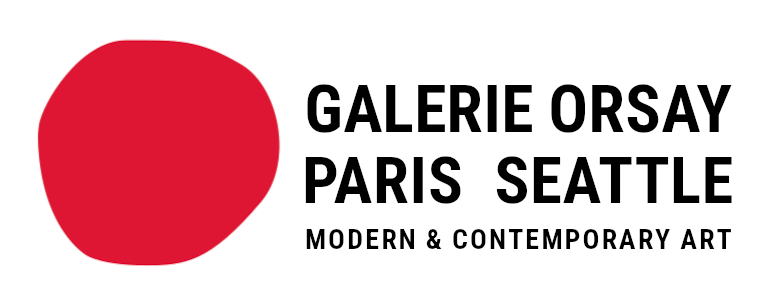Jean SIGNOVERT (1919–1981) was a French painter and engraver recognized for his mastery of printmaking and his contributions to post-war abstraction. A key figure in modern French printmaking, he was known for his refined use of line, texture, and composition, which conveyed a remarkable sense of subtlety and precision. As both an independent artist and a sought-after engraver for some of the most renowned painters of his time, Signovert played a crucial role in expanding the artistic possibilities of engraving as a medium.
Before turning 20, Signovert met the painter and engraver Abel Renaut, who introduced him to printmaking. In 1945, he formed a lifelong friendship with Roger Chastel, who introduced him to Aimé Maeght. Maeght began exhibiting Signovert’s work at his gallery in 1946, marking the beginning of his prominence in the Parisian art scene. His reputation as a skilled engraver led to a five-year collaboration with Georges Braque, during which he created engravings for Milarepa. He also worked with leading artists such as Jean Fautrier, Serge Poliakoff, Maurice Estève, Jean Arp, Chastel, and Jacques Villon.
Starting in 1973, Signovert oversaw the printmaking section of the Salon des Réalités Nouvelles, reinforcing his influence on the development of contemporary printmaking. His dedication to the medium was rooted in the belief that each print was a unique work, not merely a reproduction. As Jean-Marie Dunoyer wrote in the preface to a posthumous exhibition catalog in 1982, “For Jean Signovert, engraving was not the art of producing multiples. Printed by his own hands on his press, each impression became an original work, carrying his own imprint, never identical.” His final professional achievement was his appointment as a professor of printmaking at the École Nationale des Beaux-Arts, a position he was granted shortly before his passing in 1981.
Jean Signovert’s legacy endures through his remarkable contributions to modern printmaking and abstraction. His technical skill, artistic sensibility, and collaborations with major artists of his time place him among the key figures of post-war French art. Today, his works continue to be exhibited and studied, highlighting his role in elevating engraving as a distinct and expressive art form.

